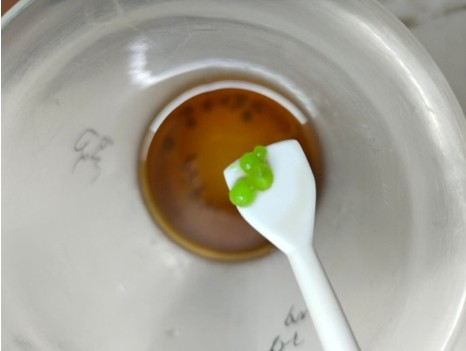Investigation of Intensity Parameters of Pr+3 Doped Metal-Organic Framework (MOFs)
DOI:
https://doi.org/10.61343/jcm.v3i02.164Keywords:
Judd Ofelt parameter, Intensity ParametersAbstract
Investigating the intensity parameters of Pr3+-doped Metal-Organic Frameworks (MOFs) involves using the Judd-Ofelt theory to determine transition probabilities and radiative lifetimes from spectroscopic data, which helps characterize the material's optical properties. This process allows researchers to understand how the Pr3+ ions, introduced into the MOF's porous structure, interact with the framework, influencing luminescence and providing insights into potential applications, such as in luminescence-based temperature sensing or other optoelectronic devices.
References
Cai, D.; Guo, H.; Wen, L.; Liu, C. Fabrication of hierarchical architectures of Tb-MOF by a “green coordination modulation method” for the sensing of heavy metal ions. CrystEngComm 2013, 15, 6702. https://doi.org/10.1039/C3CE40820E
Fang, X.; Zong, B.; Mao, S. Metal-Organic Framework-Based Sensors for Environmental Contaminant Sensing. Nano-Micro Lett. 2018, 10, 64. https://doi.org/10.1007/s40820-018-0218-0
Crawford, S.E.; Ohodnicki, P.R.; Baltrus, J.P. Materials for the photoluminescent sensing of rare earth elements: Challenges and opportunities. J. Mater. Chem. C 2020, 8, 7975–8006. https://doi.org/10.1039/D0TC01939A
Mahata, P.; Mondal, S.K.; Singha, D.K.; Majee, P. Luminescent rare-earth-based MOFs as optical sensors. Dalton Trans. 2017, 46, 301–328. https://doi.org/10.1039/C6DT03419E
Lustig, W.P.; Mukherjee, S.; Rudd, N.D.; Desai, A.V.; Li, J.; Ghosh, S.K. Metal-organic frameworks: Functional luminescent and photonic materials for sensing applications. Chem. Soc. Rev. 2017, 46, 3242–3285. https://doi.org/10.1039/C6CS00930A
Aslandukov, A.N.; Utochnikova, V.V.; Goriachiy, D.O.; Vashchenko, A.A.; Tsymbarenko, D.M.; Hoffmann, M.; Pietraszkiewicz, M.; Kuzmina, N.P. The development of a new approach toward lanthanide-based OLED fabrication: New host materials for Tb-based emitters. Dalton Trans. 2018, 47, 16350–16357. https://doi.org/10.1039/C8DT02911C
Younis, S.A.; Bhardwaj, N.; Bhardwaj, S.K.; Kim, K.-H.; Deep, A. Rare earth metal-organic frameworks (RE-MOFs): Synthesis, properties, and biomedical applications. Coord. Chem. Rev. 2021, 429, 213620. https://doi.org/10.1016/j.ccr.2020.213620
Khudoleeva, V.; Tcelykh, L.; Kovalenko, A.; Kalyakina, A.; Goloveshkin, A.; Lepnev, L.; Utochnikova, V. Terbium-europium fluorides surface modified with benzoate and terephthalate anions for temperature sensing: Does sensitivity depend on the ligand? J. Lumin. 2018, 201, 500–508. https://doi.org/10.1016/j.jlumin.2018.05.002
Escudero, A.; Becerro, A.I.; Carrillo-carrión, C.; Núñez, N.O.; Zyuzin, M.V.; Laguna, M.; González-mancebo, D.; Ocaña, M.; Parak, W.J. Rare earth based nanostructured materials: Synthesis, functionalization, properties and bioimaging and biosensing applications. Nanophotonics 2017, 6, 881–921. https://doi.org/10.1515/nanoph-2017-0007
Wang, F.; Deng, K.; Wu, G.; Liao, H.; Liao, H.; Zhang, L.; Lan, S.; Zhang, J.; Song, X.; Wen, L. Facile and Large-Scale Syntheses of Nanocrystal Rare Earth Metal-organic Frameworks at Room Temperature and Their Photoluminescence Properties. J. Inorg. Organomet. Polym. Mater. 2012, 22, 680–685. https://doi.org/10.1007/s10904-011-9498-2
B. R. Judd; “Optical absorption intensities of rare earth ions”; Physics Review, 127, (1962), 750.
G. S. Oflet; “Intensities of crystal spectra of rare earth ions”; Journal of Chemical Physics, 37, (1962), 511.
J. C. Slater; Phys. Rev, 34, (1929), 1293.
E. U. Condon & G. H. Shortely; “The Theory of Atomic Spectra”, (1963), University Press, Cambridge.
G. Racah; Phys. Rev. 61, (1942), 186.
G. Racah; Phys. Rev. 62, (1942), 438.
G. Racah; Phys. Rev. 63, (1942), 367.
W.T. Carnell, P. R. Fields & B. G. Wybourne; J. Chem Phys., 42(11), (1965), 3797.
E.Y. Wong, J. Chem. Phys., 35, (1961), 544.
E.Y. Wong, J. Chem. Phys., 38, (1963), 976.

Downloads
Published
How to Cite
License
Copyright (c) 2025 Kumari B, Manoj S Shekhawat, Mahendra Vyas, Alok Vyas

This work is licensed under a Creative Commons Attribution 4.0 International License.
Copyright© by the author(s). Published by journal of Condensed Matter. This is an open access article distributed under the terms of the Creative Commons Attribution (CC BY) license (https://creativecommons.org/licenses/by/4.0/), which permits unrestricted use, distribution, and reproduction in any medium, provided the original author(s) and source are credited.









